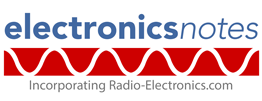Home » Component data » Transistor data » this page
BDX33 Darlington Power Transistor Data
Highlight data for the BDX33 NPN Darlington transistor which includes electrical parameters, pinout, package type and many other key transistor datasheet details
The BDX33B and BDX33C are silicon epitaxial-base NPN power transistors in monolithic Darlington configuration mounted in a JEDEC TO-220 plastic package.
They are intended for use in power linear and switching applications and have a maximum dissipation of 70W.
The complementary PNP devices are the BDX34B and BDX34C types which enable the design of complementary power output stages.
Key details and performance parameters for the BDX33 NPN Darlington transistor.
| BDX34 transistor datasheet parameters & data |
|
|---|---|
| Parameters | Details |
| Transistor type | 70W Darlington NPN |
| Package type | TO220 |
| VCBO max (V) | 80* |
| VCEO max (V) | 80* |
| VCEsat (V) | 2,5V @ I |
| IC max (A) | 10 |
| Peak current ICM max (A) | 15 |
| Base current IB max (A) | 0.25 |
| TJ Max °C | 150 |
| PTOT mW | 70 |
| DC current gain hFE | 750 min @ 3V |
| hfe | 100 @ IC 1A & f = 1MHz |
| Similar / equivalents | |
Outline:
Pinout:
Explanation of transistor parameters
| Parameter | Explanation |
|---|---|
| VCBO Max | Maximum collector-base voltage with emitter open circuit . |
| VCEO Max | Maximum collector-emitter voltage with base open circuit. |
| VEBO Max | Maximum emitter-base voltage with collector open circuit. |
| VCEsat (included where applicable) | The voltage drop across the collector-emitter when the transistor is fully saturated (acting as a closed switch). |
| IC Max | Maximum collector current. |
| Parameter | Explanation |
|---|---|
| TJ | Maximum junction temperature. |
| PTOT Max | Maximum device dissipation normally in free air at 25°C unless other conditions indicated. |
| fT Min | Minimum cutoff frequency at which the current gain in a common emitter circuit falls to unity. |
| COB Max | Maximum collector capacitane, normally measured with emitter open circuit. |
| hFE | DC current gain for HFE at IC. [Note hfe is the small signal gain and although this may be slightly different, the transistor current gain will vary considerably from ne transistor to the next of the same type.] |
| PTOT Max | Maximum device dissipation normally in free air at 25°C unless other conditions indicated. |
These are the main transistor parameters that have been included in our list. There are others, but these help quantify the main elements of the performance of the transistor.
Please note, that the data given is the best estimate we can give within a tabulated summary of this nature. Parameters also vary between manufacturers. Electronics Notes cannot accept any responsibility for errors, inaccuracies, etc, although we do endevaour to ensure the data is as accurate as possible.
Notes and supplementary information
• Availability & sources
The BDX33 is available from a number of stockists and electronic component distributors many of which are given in the table below.
BDX33 Component Distributor, Stock and Pricing
• Further information
Note * There are two versions of the BDX33: the BDX33B which has a VCBO and VCEO max of 80V and the BDX33C which has maximum voltages of 100V.
• Internal schematic
When designing with a BDX34, it is very useful to know and understand the internal schematic. The resistors R1 and R2 provide improved switchinga and frequency response and the diode helps provide protection.

The internal schematic provides insight into the operation of the device.
• Notable features
The BDX33 series is an NPN epitaxial silicon power transistor that utilizes the Darlington configuration, making it exceptionally sensitive to small base currents.
Darlington Monolithic Configuration: The device integrates two NPN transistors and two resistors on a single chip, effectively cascading the gain of both transistors (hFE typically 750 minimum at IC=3 A). This allows a tiny base current to control a very large collector current.
High Current and Power Handling: It can handle a continuous collector current (IC) of up to 10 A (with a peak of 15 A) and has a total power dissipation (Ptot) of up to 70 W at a case temperature of 25∘C. This makes it suitable for driving high-power loads.
Integrated Protection Diode: The monolithic structure includes an integrated reverse-biased parallel diode (sometimes called a freewheeling or flyback diode) between the collector and emitter. This diode provides protection against voltage spikes when switching inductive loads like motors and relays.
High Voltage Rating Options: The BDX33 series is available in several variants, such as the BDX33B (80 V VCEO) and the BDX33C (100 V VCEO), offering flexibility for different power supply voltage levels.
Complementary Pair Available: It has complementary PNP counterparts, the BDX34B and BDX34C, which simplifies the design of push-pull or complementary-symmetry power output stages (e.g., in Class B amplifiers).
• Typical applications summary
| Application Category | Typical Use Case | Device Feature Utilised |
|---|---|---|
| High-Power Switching | Driving high-current DC motors, large solenoids, and high-power relays. | The 10 A collector current capability and 70 W power dissipation (with heatsink) allow it to safely control significant power loads. The built-in protection diode handles inductive kickback. |
| Power Amplification | Audio amplifier output stages (often in complementary pairs with the BDX34), general-purpose linear power supplies. | The high DC current gain (hFE≥750) enables high input sensitivity, making it efficient for use in linear power applications, and the complementary PNP pair simplifies design. |
| Industrial Control Interfaces | Interfacing low-power microcontrollers or logic circuits to high-current external peripherals. | The Darlington configuration's ultra-high gain ensures that the small current provided by a logic pin (a few mA or less) is sufficient to fully drive the transistor and switch the 10 A output. |
| Power Regulation and Control | Pass element in series voltage regulators and current limiting circuits. | The 70 W power capability and TO-220 package (designed for heatsinking) make it robust for handling the heat generated when regulating current or voltage in series pass applications. |
 Written by Ian Poole .
Written by Ian Poole .
Experienced electronics engineer and author.
Return to Component Data menu . . .





